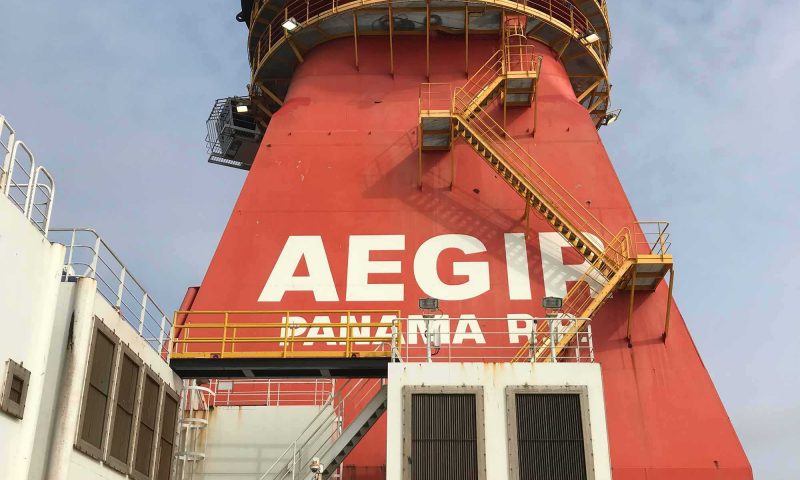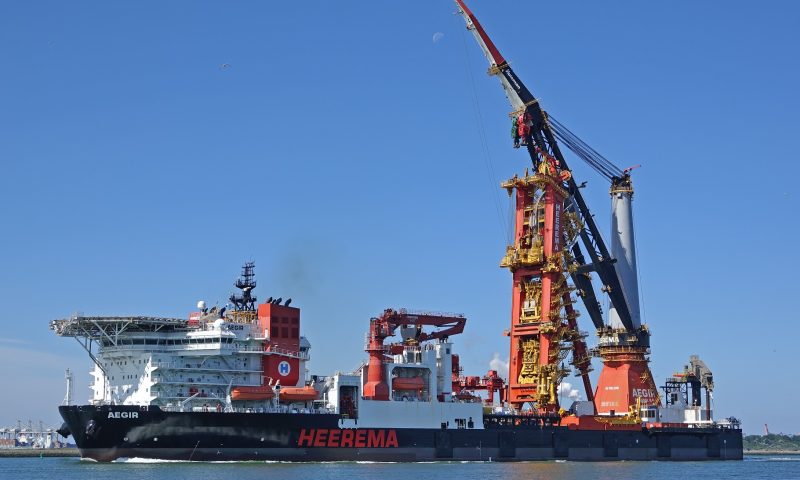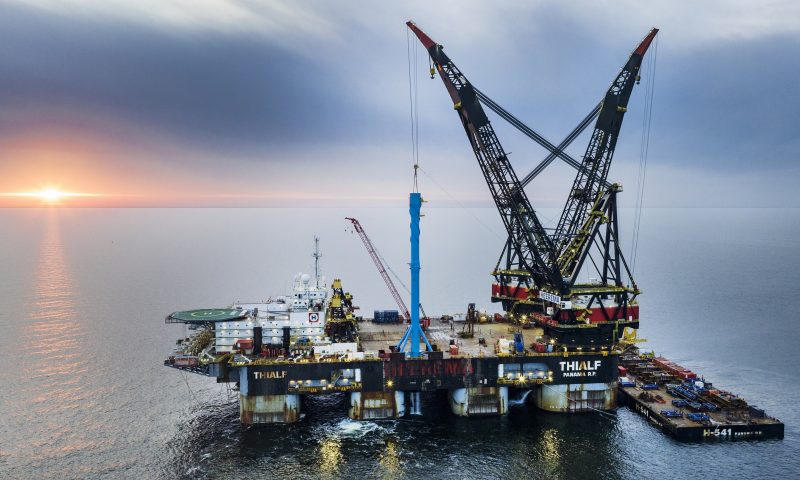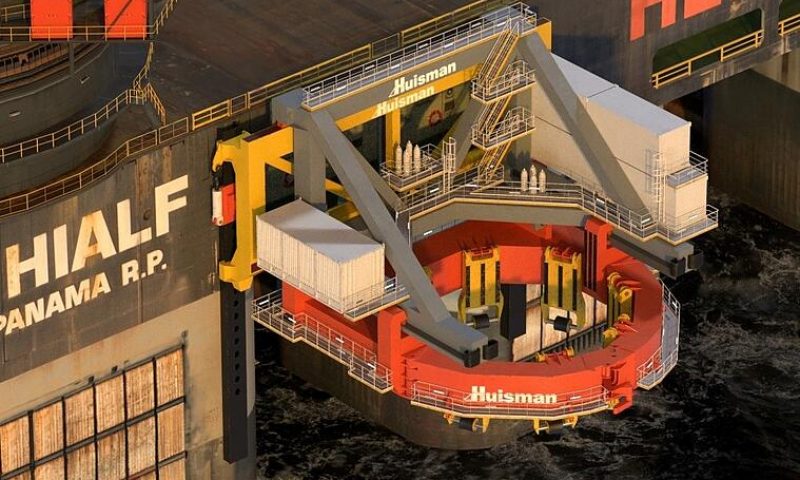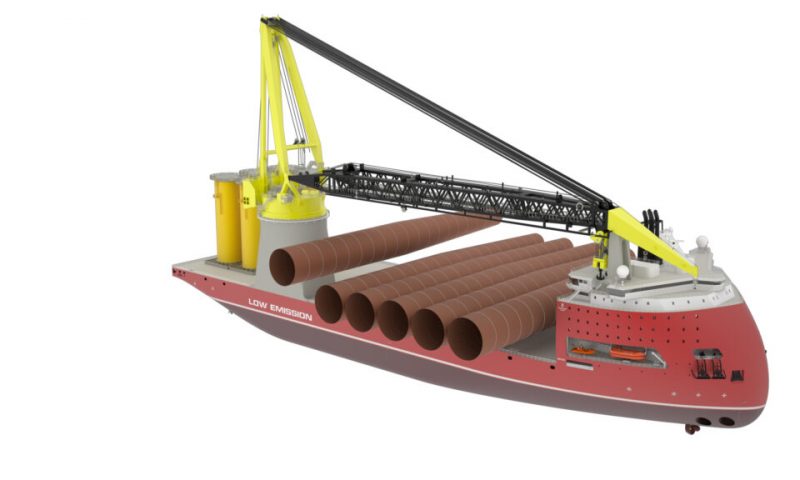
AEGIR – From Deep Water Construction Vessel to Offshore HLV
Ulstein is known for designing over a dozen of newbuild heavy lift vessels (HLV) but is also actively involved in vessel conversion and upgrade engineering. And with the turn in market sentiment, many vessels from the oil and gas industry are being redeployed towards the offshore renewables and the decommissioning industry.
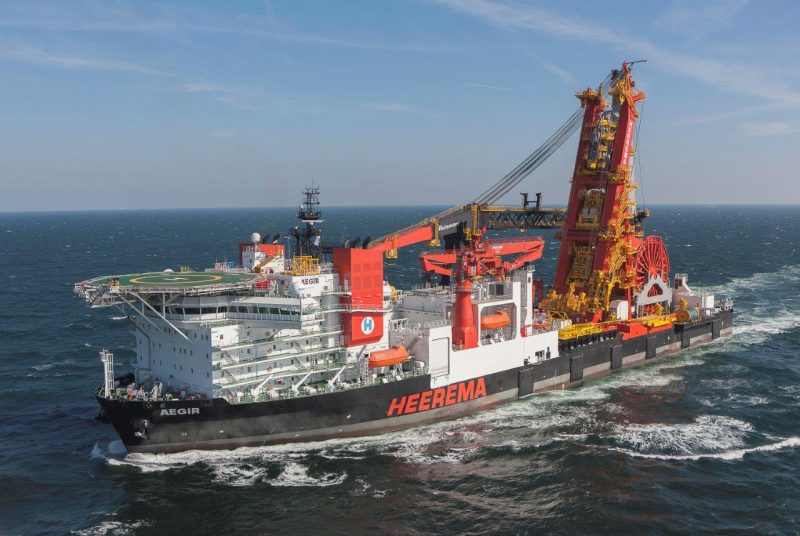
Aegir Deepwater Construction Vessel – now converted to a fast sailing heavy lift vessel
After Heerema Marine Contractors’ strategic reposition on its core business of Heavy Lift, Decommissioning and Renewables, Ulstein was contracted in 2018 to provide design and engineering services to convert their deepwater construction vessel Aegir into a fast sailing heavy lift vessel.
The Aegir joined the Heerema fleet back in 2013 as a deepwater construction vessel featuring J-lay and Reel-Lay capabilities via a large moonpool. Equipped with a large heavy lift crane, she was the first vessel to use a portable reel system, saving time that is typically taken by sailing back and forth to a shore base.
The vessel is now converted into a dedicated offshore heavy lift vessel. Aegir’s already massive 4,000-ton main crane and the fact that her hull design is based on Ulstein’s SOC 5000 heavy lift vessel design, is a key benefit in this development. Nevertheless, innovative solutions and smart engineering work is needed to make the vessel into an efficient asset for the new markets that Heerema is targeting.
As Ko Stroo, project manager/lead naval architect at Ulstein mentions:
“It is not just simply removing the tower and lay equipment that turns Aegir into a heavy lift vessel. The obvious (but not necessarily the easiest) areas of attention are the closing of the large moonpool, creating a flush main deck and modifications to marine, ballast and venting systems. For the latter, it is checked what the impact is of applying Ulstein’s patent pending venting solution, as it is originally developed for newbuilding projects. Also, extensive probabilistic stability calculations and a full FEM analysis are made in relation to the new modes of operation.”
“Furthermore, Ulstein is also performing CFD analysis to assess if hull optimisation could reduce fuel consumption and emissions for the new operational profile of the vessel. A comprehensive and sometimes rather complex engineering scope, where experience, creativity and open communication provides for pleasant and effective cooperation between Heerema and Ulstein.”
